Presbyopia Correction
What is Presbyopia
Presbyopia is long-sightedness caused by loss of elasticity of the lens of the eye, occurring usually in middle and old age. In Singapore, it is commonly referred to as “lao hua yan” (老花眼) in Chinese. Many people start to notice they have presbyopia in their 40s, when their eyes slowly lose the ability to focus on things up close. A tell-tale sign is the need to hold reading materials farther away in order to see them clearly. In fact, ‘presbyopia’ is the Greek word for ‘old eye’. Presbyopia is considered a normal part of aging.
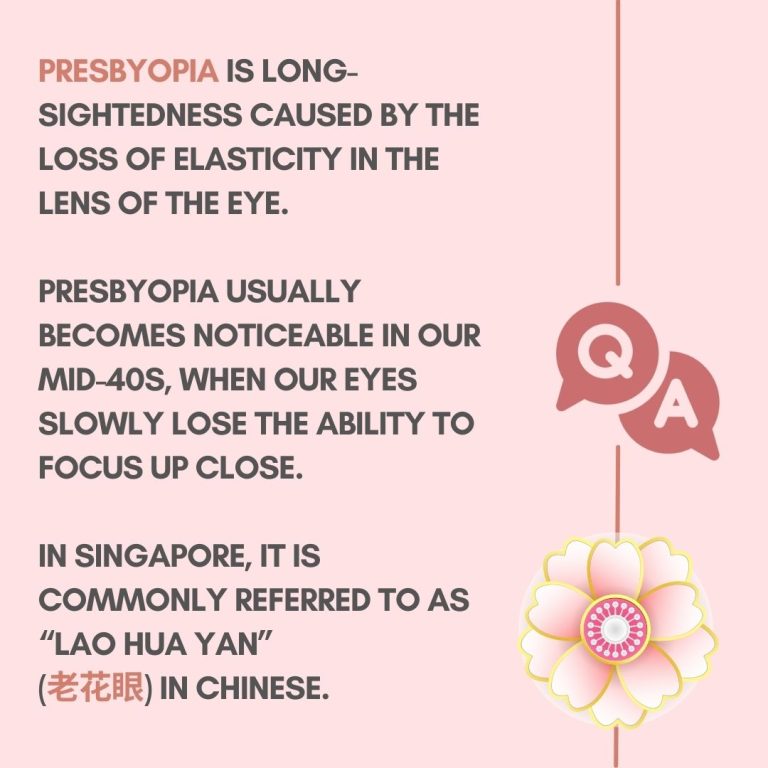
What causes Presbyopia
You have a clear lens located inside the eye behind your iris. It helps you see by changing shape to focus light onto the retina. Young people have soft and flexible lens that change shape easily. This lets them focus their vision on things that are both near and far away effortlessly. After age 40, the lens becomes more rigid, unable to change shape as easily as they used to. As a result, tasks that used to be easy become harder, such as reading, threading a needle, etc. Presbyopia should not be confused with farsightedness. Although the two have similarities, their causes are very different. In a nutshell, farsightedness is a refractive error. People who have farsightedness cannot see both distant and near objects clearly. Farsightedness can happen at any age, but presbyopia only happens after 40.
Presbyopia cannot be reversed, as it is part of the aging process. Nonetheless, the condition can be corrected with eyeglasses, contact lenses or surgery. If you do not correct presbyopia, you may experience eye strain and headaches.
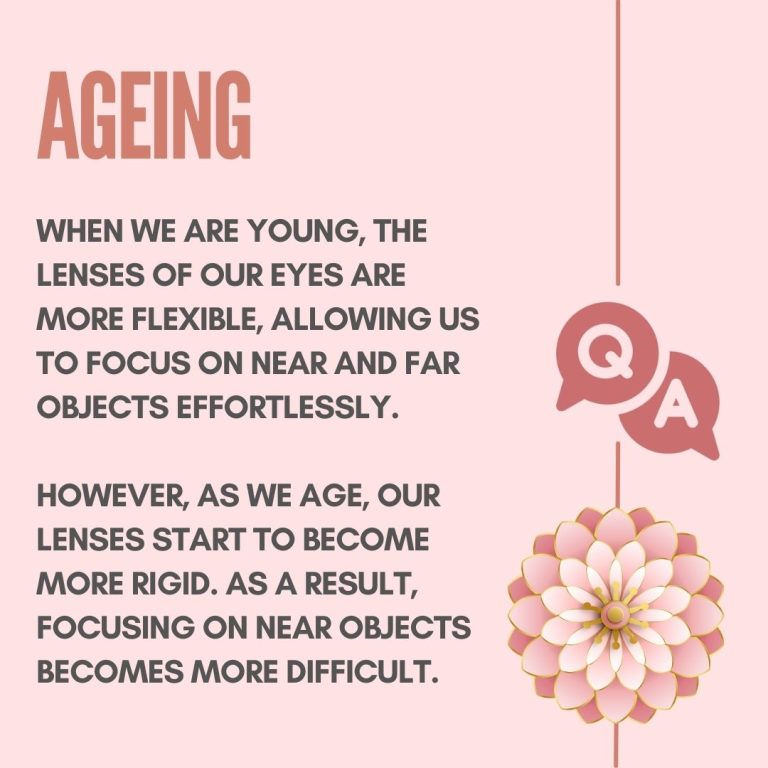
How can Presbyopia be corrected
1. Eyeglasses
People who are not keen on surgical procedures can opt for eyeglasses, such as bifocal glasses, progressive glasses and reading glasses. Bifocal eyeglasses have a distance vision prescription at the top part of the lens and a near vision prescription at the lower section of the lens.Progressive eyeglasses provide something similar, but with a smooth progression of power between the top and bottom for viewing intermediate distances. Meanwhile, reading glasses are suitable for people who spend a lot of time focusing on close-up material.
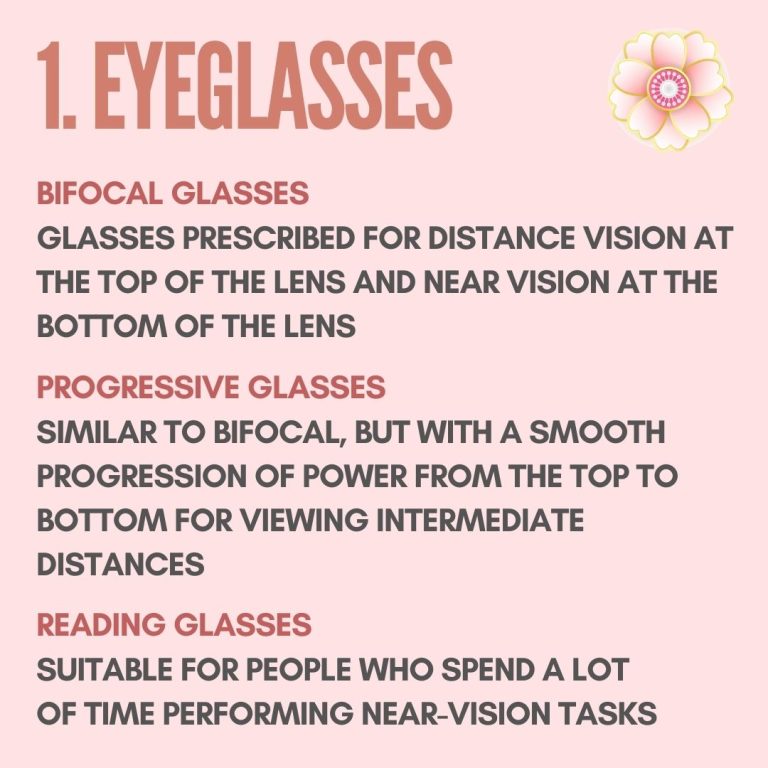
2. Contact Lenses
Multifocal contact lenses with variations in power can be used to correct near, intermediate and far vision. However, for correction of presbyopia, monovision lenses can be used. One eye wears a near visionlens and the other eye wears a distance vision lens.
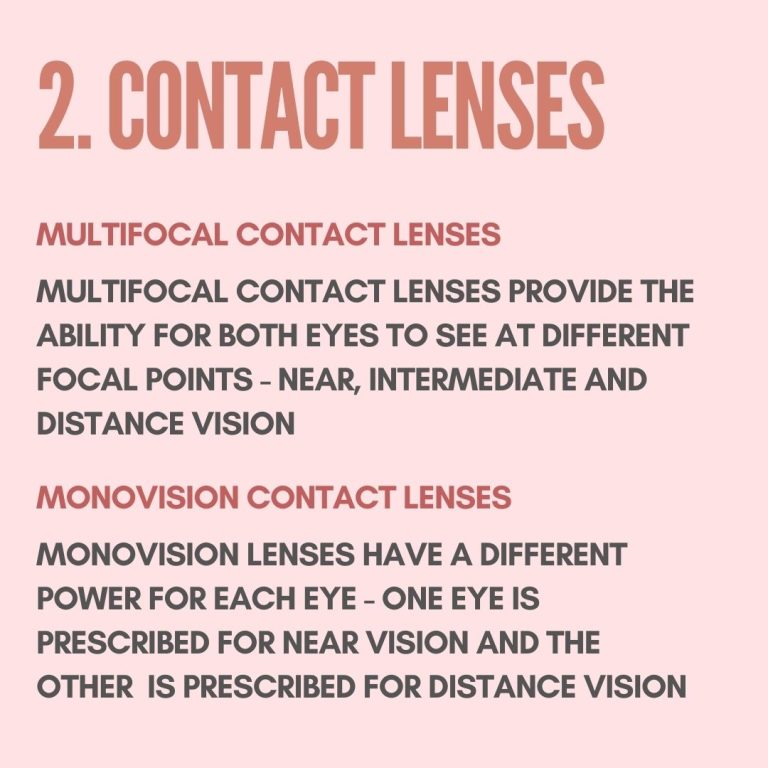
3. Laser Vision Correction
LASIK treats presbyopia by changing the shape of the eye’s cornea in order to create different power zones for seeing at different distances.
At Clearvision, TransPRK is our method of choice to treat presbyopia. TransPRK is a minimally invasive, no-touch and flapless procedure that is able to correct many eye conditions safely and quickly.
For presbyopia, we use Monovision treatment which allows for both near and distance vision capability. With Monovision, your dominant eye will be corrected for distance vision, while your non-dominant eye will be corrected for near vision. Before undergoing the laser surgery, you can do a contact lens trial to find out if Monovision is suitable for you. However, please bear in mind that although the results of Laser Vision Correction are permanent, it cannot prevent the natural aging process of the lens.
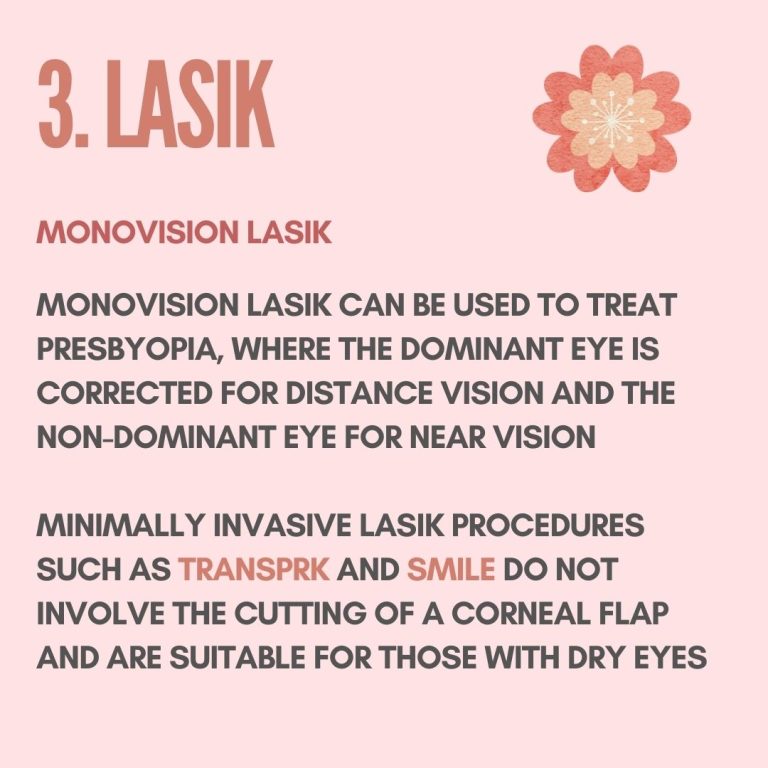
Book Your Eye Evaluation
If you would like to book a suitability evaluation with us to determine if you are eligible for laser vision correction surgery,
📞 Call us at 6733 3316
📱 WhatsApp us at 8383 7989
✉️ Email us at doctor@clearvision.com.sg
🤳 Message us on Facebook
🤳 Message us on Instagram
The evaluation costs $55 and will take around 1 – 2 hours.
It will include a series of eye tests as well as a personal consultation with your lasik surgeon.
Suitability Evaluation Guide
Our suitability evaluations typically take place during these times, subject to availability –
| Mondays | 2:30 PM – 3:30 PM |
| Tuesdays | 9:00 AM 2:30 PM – 5:15 PM |
| Wednesdays | 9:00 AM |
| Thursdays | 2:30 PM – 3:30 PM |
| Fridays | 9:00 AM – 11:00 AM 2:30 PM – 5:15 PM |
Just let us know which days and times work for you and we’ll do our best to accommodate.

